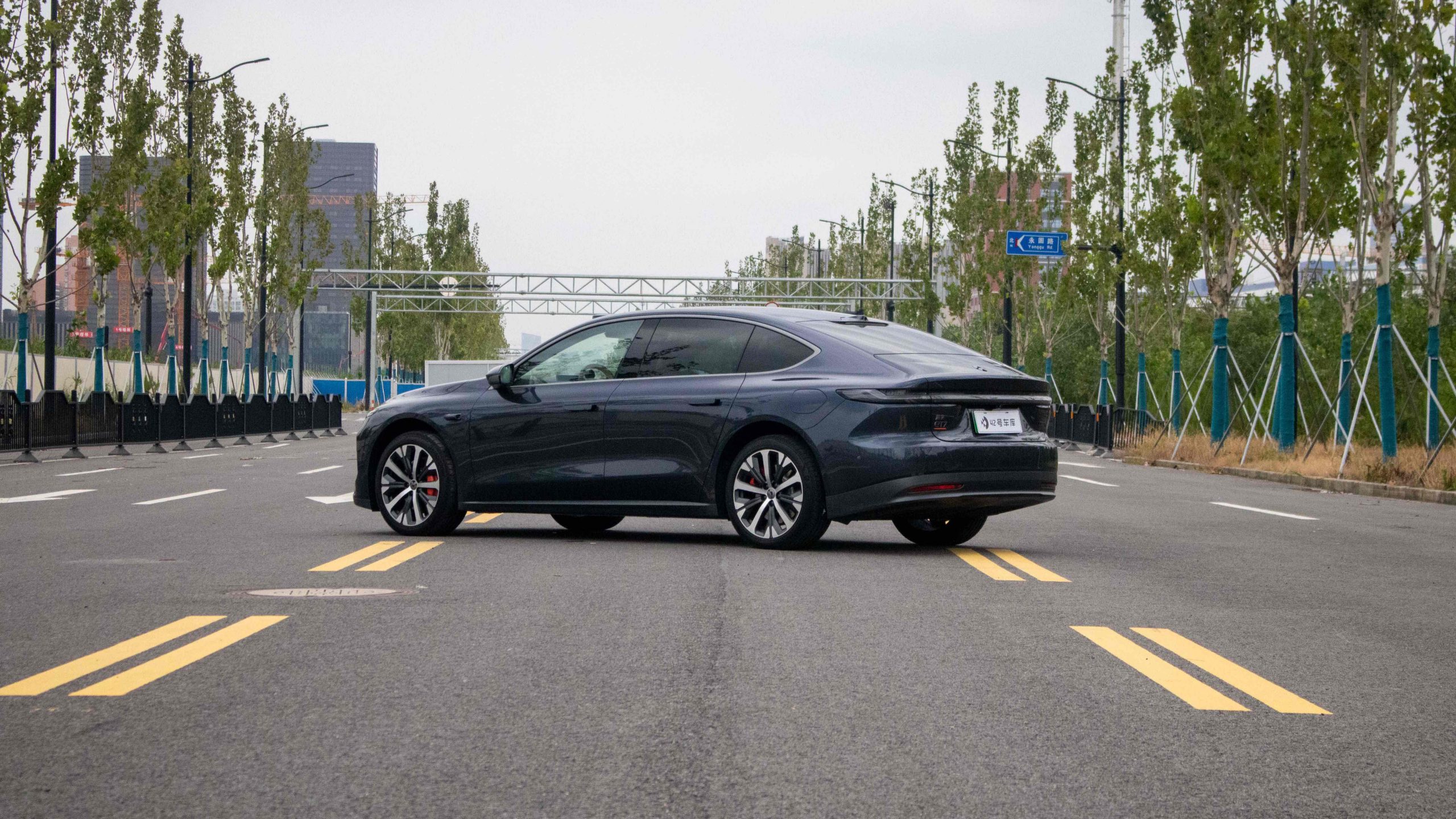Some time ago, the garage editors each received a NIO ES7 and a NIO ET5. After receiving the cars, we drove these two cars into the 42Test standard test to conduct a high-speed endurance test and a city endurance test.
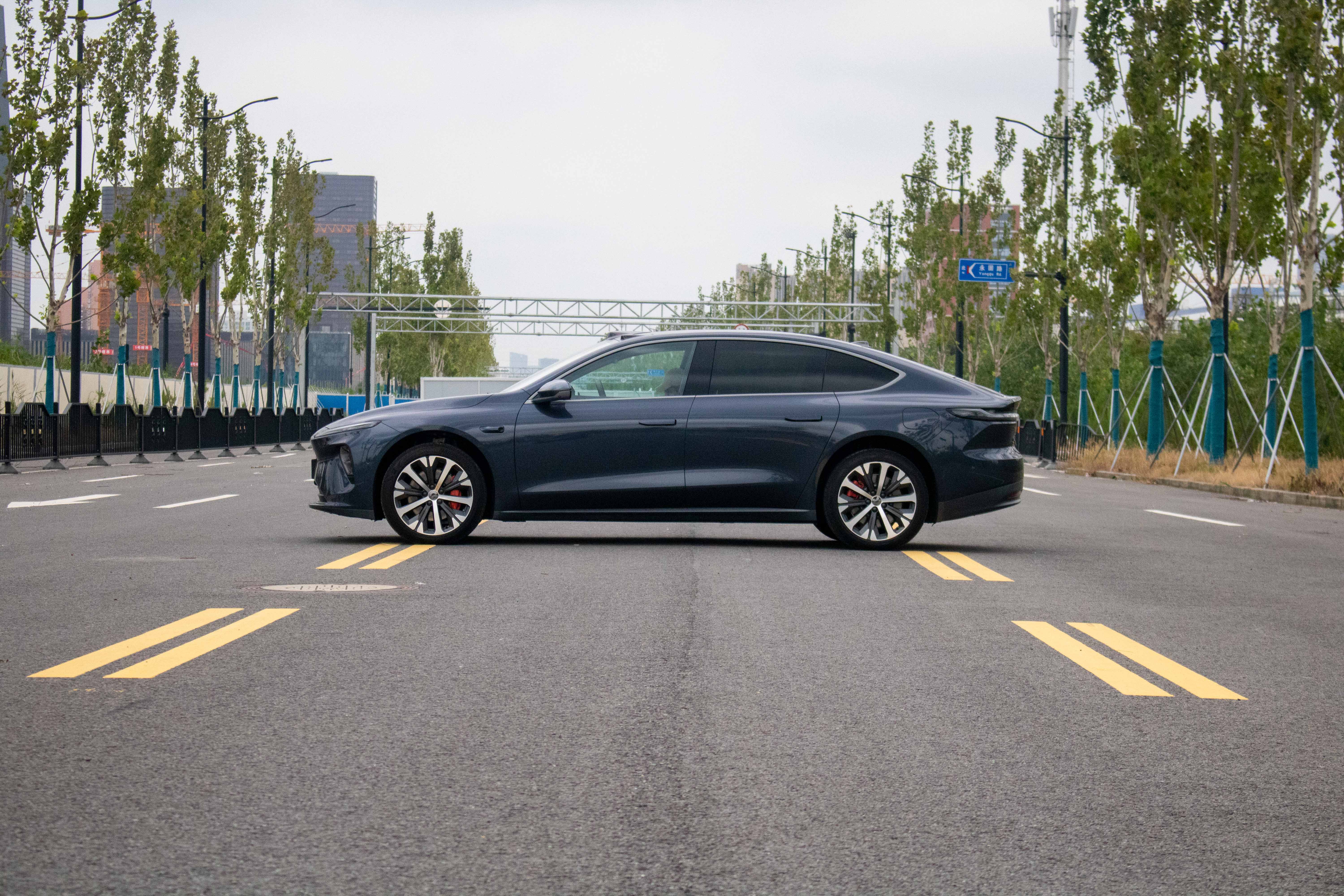
The ES7 we tested had a 100 kWh battery pack with optional 21-inch carbon fiber sharp silver wheels, and an official CLTC endurance of 575 km; unfortunately, the ET5 we tested had a 75 kWh battery pack with optional 20-inch five-spoke racing wheels, and an official CLTC endurance of 500 km.
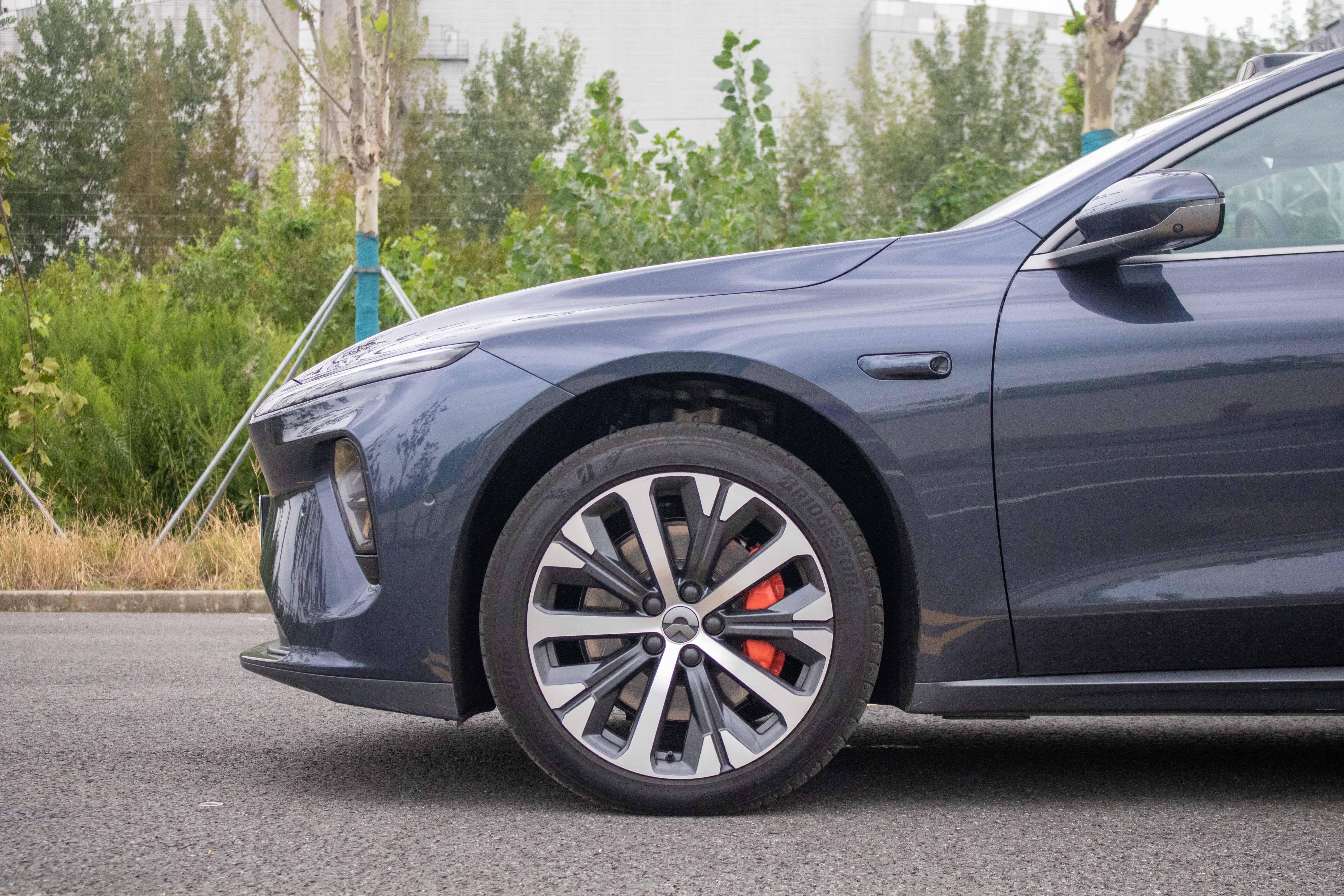
After the test, the theoretical full electric endurance of ES7 and ET5 in high-speed driving were 414 km and 373 km respectively. Although the battery capacity differed by 25 kWh, the difference was much smaller than expected. The theoretical full electric endurance of ES7 and ET5 in city driving were 522 km and 326 km respectively. With lower energy consumption, the advantage of a larger battery was fully reflected.
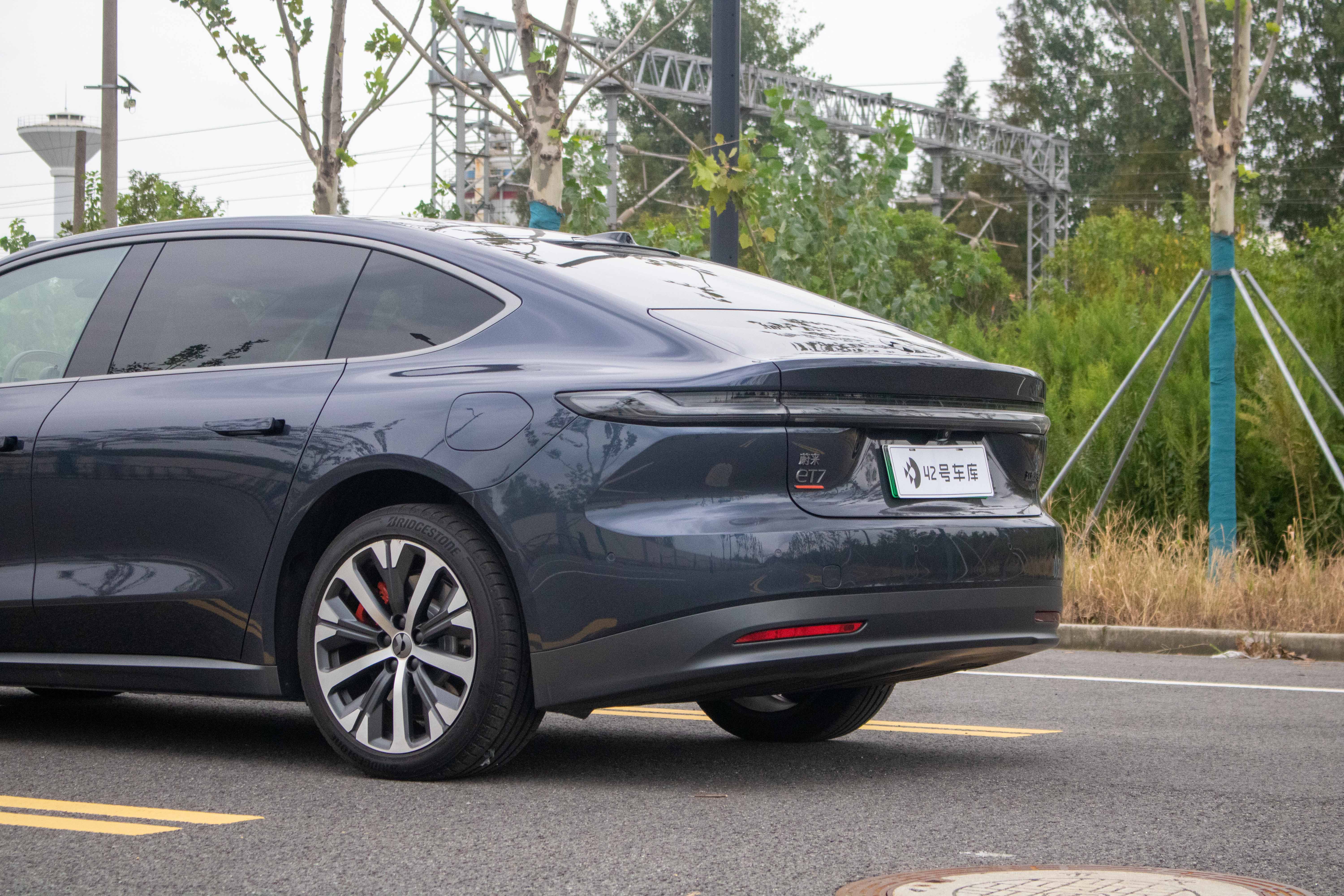
To be honest, neither the ET5 with a wind resistance coefficient of 0.24 nor the ES7 with a coefficient of 0.263 surprised us much. So this time, we brought in the NIO ET7 with a wind resistance coefficient of only 0.208 to test whether the ET7 with a better wind resistance coefficient would be able to take the lead in endurance and to see what differences there would be in charging.
Endurance test: Low speed is the energy killer
The NIO ET7 we tested this time was a debut version, containing a 100 kWh battery pack with optional 20-inch five-spoke dynamic wheels, and an official CLTC endurance of 675 km. The test conditions were half-load working conditions, the driving mode was set to comfortable, and the air conditioning was set to 22 °C with 2 levels of fan. The cold tire pressure of the vehicle was 2.4 bar.
However, the test environment was slightly different. The temperature on the day of the test was 29°C, which was slightly higher than the test temperatures of the other two cars. In addition, even on the same test route, there were different road conditions.
High-Speed Endurance Test
On the high-speed test route, we still drove southwest from the S20 Beizhai Interchange to the G60 and continued driving until an appropriate turning point for returning to charge.
As our test of the ET7 coincided with the first two days of the October long holiday, we encountered heavy traffic caused by drivers leaving for their vacations early. When we passed through Xiasha, Hangzhou, G60 was congested with red traffic for almost 30 kilometers, and the frequent stops and starts of the traffic jam were not good for this 2.4-ton beast.

The displayed range of the ET7 when fully charged was 666 kilometers. At the start of the official high-speed test, its power level was at 98%, with a remaining range of 663 kilometers. Due to the traffic jam, the total distance we traveled was 426 kilometers, which took us 5 hours and 50 minutes. Even though we maintained a speed of 120 kilometers per hour, our average speed was reduced to 73 kilometers per hour. We ended this high-speed test when the remaining range displayed on the car was only 21 kilometers.
At the end of the test, the displayed energy consumption of the ET7 was 22.8 kWh per 100 kilometers, and the displayed range was reduced by 642 kilometers. Through our calculations, the actual/displayed range ratio of the ET7 was 1:1.51, higher than that of the ES7 at 1.387 and the ET5 at 1.134.
 The main reason is that we can see from the high-speed power consumption line chart that there was congestion encountered between 140-170 km, corresponding to a significant fluctuation in the line chart. At 140 km, the displayed power dropped by 7 km after driving 10 km, and at 150 km, the displayed power dropped by 20 km after driving 10 km.
The main reason is that we can see from the high-speed power consumption line chart that there was congestion encountered between 140-170 km, corresponding to a significant fluctuation in the line chart. At 140 km, the displayed power dropped by 7 km after driving 10 km, and at 150 km, the displayed power dropped by 20 km after driving 10 km.
As the vehicle gradually accelerates, power consumption stabilizes, and the same principle applies to a high rate of power loss in the rear. This can also be confirmed during the city endurance test that followed.
Fortunately, even if there are unstable factors in road conditions, the theoretical maximum endurance range of the NIO ET7 is still 439 km. Compared to the ES7, which has almost the same weight, the theoretical maximum endurance range is 25 km longer. If the road conditions are more stable, I believe that the difference between the ET7 and the ES7 will continue to widen. Therefore, when the vehicle weight is almost the same, having lower wind resistance can indeed help with high-speed endurance.
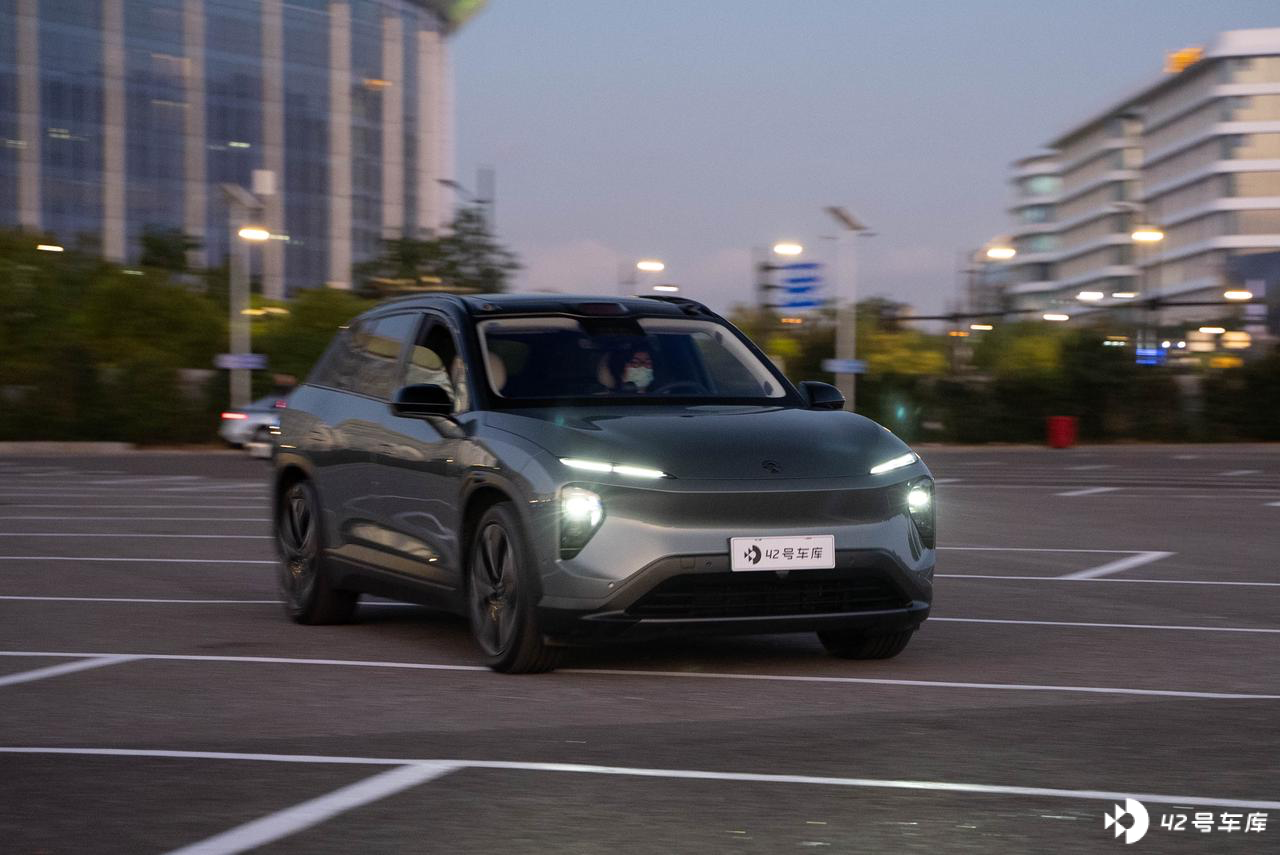
Now, let’s compare the weaker ET5 in terms of performance. With a 75 kWh battery, its official CLTC endurance range is 500 km, and its displayed endurance range when fully charged is also 500 km. With the same wheel hub configuration, we adopted the 640 km endurance range of the NIO ET5 with a 100 kWh battery. After an informal estimate, the theoretical maximum endurance range of the NIO ET5 with a 100 kWh battery is 478 km.
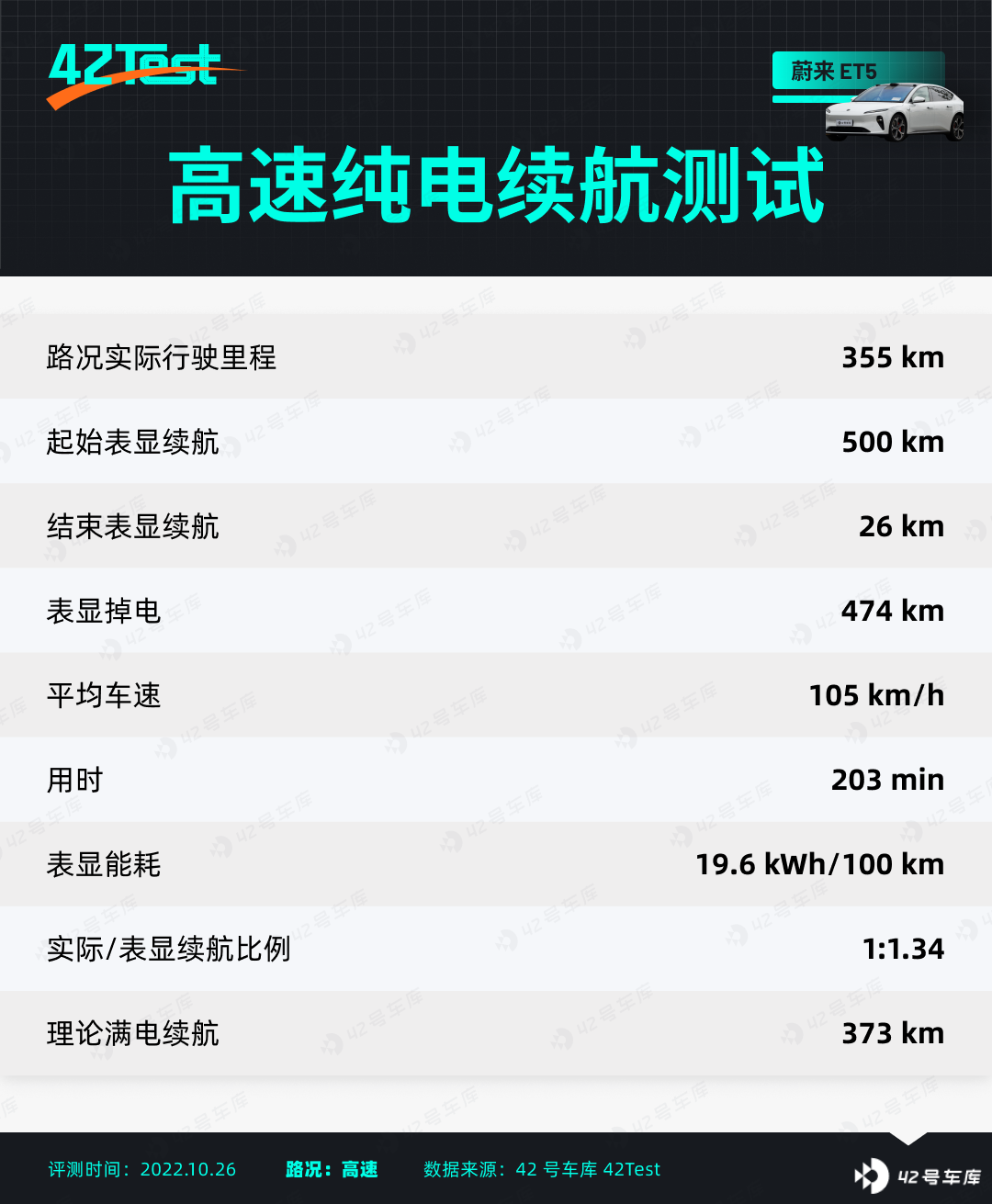
Therefore, the ET5 with 120 kW less power and a weight of about 200 kg less can indeed have a better endurance ability than the ET7. The difference in endurance range can at least let the ET5 last until the next highway service area in the Jiangsu-Zhejiang-Shanghai highway network.### City Range Test
The city range test covers 50 km of urban roads in Shanghai plus 100 km of the outer ring expressway. It should be noted that there are slight differences in testing conditions among the three cars. “ET5 was tested during the morning rush hour at 7 AM, when severe traffic jams occurred on the urban and outer ring roads, with a minimum average speed of 25.8 km/h“.
ES7 departed at 1 PM in the afternoon, with relatively smooth traffic conditions except for congestion at some sections of the outer ring expressway. Its average speed was 29.3 km/h.
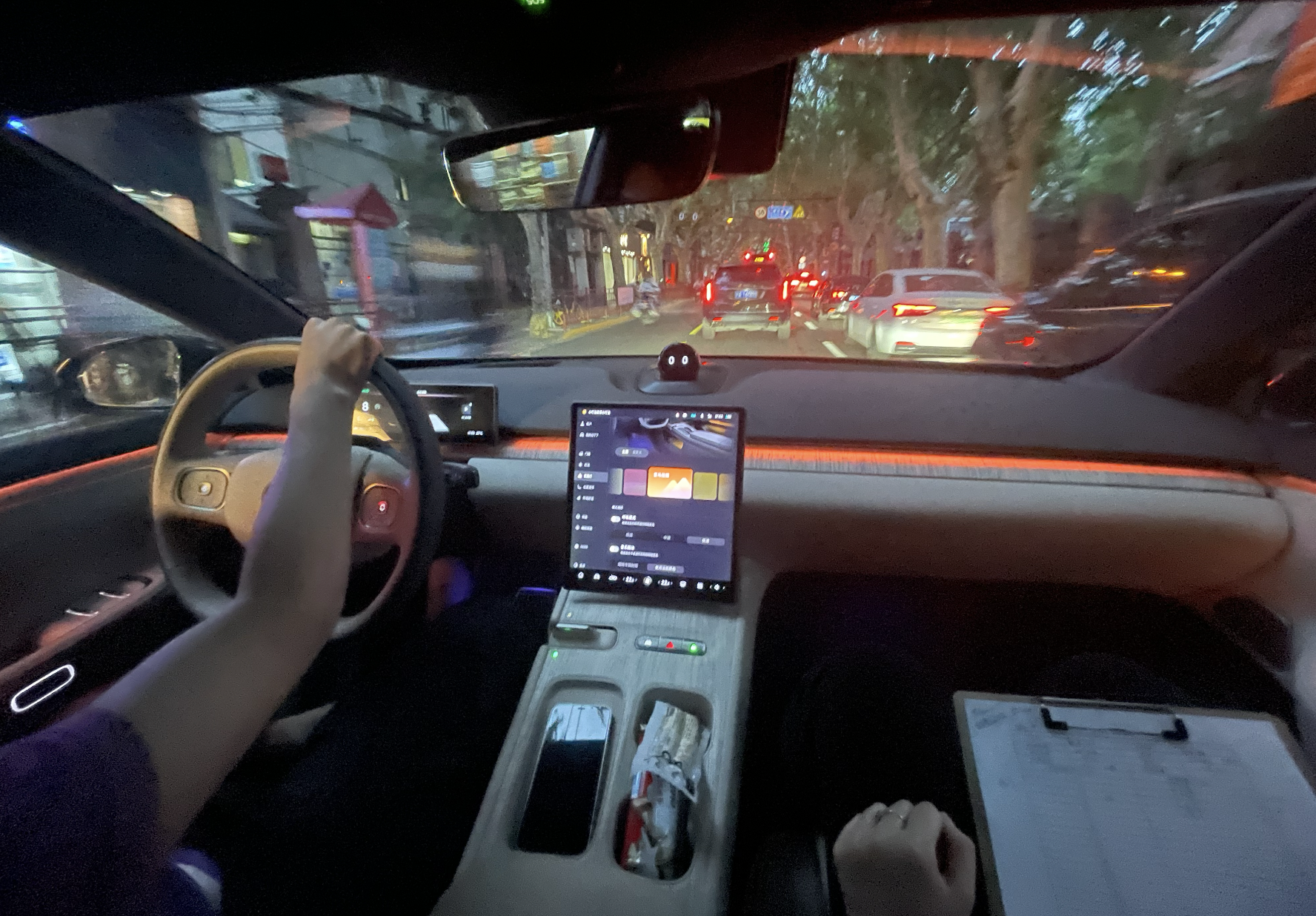
ET7 was tested at 5 PM, when the ground road of the first 50 km was jammed during the evening rush hour. The last 100 km of the outer ring road happened to be relatively smooth, resulting in an average speed of 34.9 km/h.

The three cars, ET5, ES7, and ET7, showed a remaining range of 230 km, 164 km, and 194 km, respectively. This highlights the characteristics of who can run more in low-speed congestion and whose discharge ratio is higher. Let’s take a look at the discharge ratio chart of ET7. During the first 50 km of the urban test, the average discharge rate of ET7 was 14.8 km, while it was 12.1 km for the last 100 km of the outer ring road.
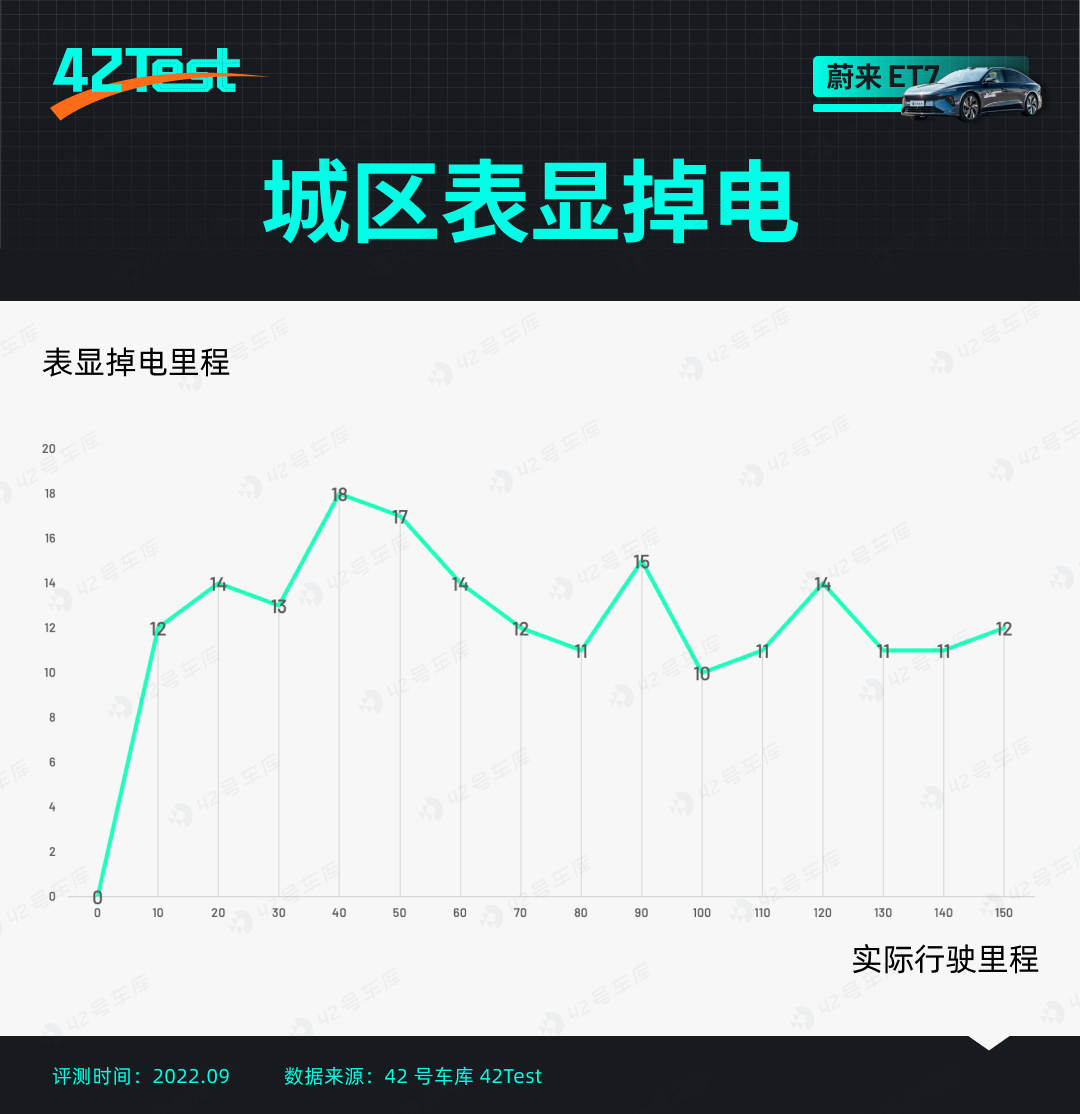
The reason is that “whether it is NIO ET5 or ET7, starting and stopping repeatedly in the congested road conditions, it will have a significant impact on energy consumption to drive a car weighing 2.4 tons from a stationary state. Moreover, regenerative braking system has little effect during this process, whereas the braking system needs to work frequently“.
When a vehicle is driving at a constant speed on the highway, the vehicle’s energy consumption only needs to overcome the resistance to maintain speed, and it does not need to frequently start and stop the vehicle, which greatly improves the energy consumption situation. This is also why the power display of the ES7 is more stable when the power is off.
Charging Test: Curve is Surprisingly Consistent
We were also very curious about charging. Both models are NT 2.0, with 100 kWh battery packs, but one is the ET7 and the other is the ES7. Will there be any differences in the charging process between the two?
The answer is almost none.
When we tested the ET7 and ES7, we also chose two different charging piles. The ET7 uses a small orange brand 120 kW DC fast charging pile, and the ES7 we choose NIO’s own 180 kW fast charging pile.
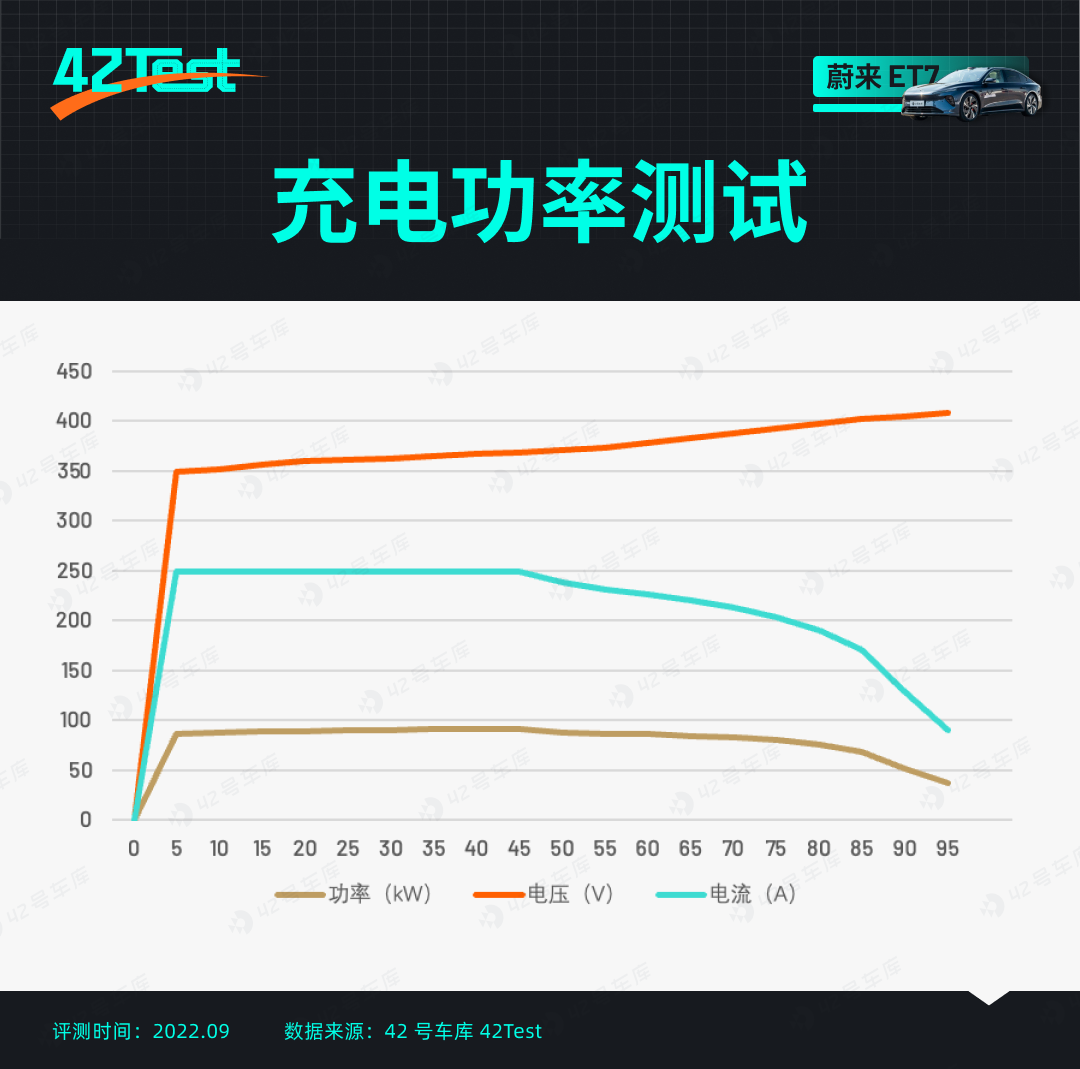
The time spent by both cars from 5% to 80% battery level and from 80% to 95% battery level is surprisingly similar. Therefore, even on NIO’s own high-power charging pile, there is no advantage compared to other third-party brands.
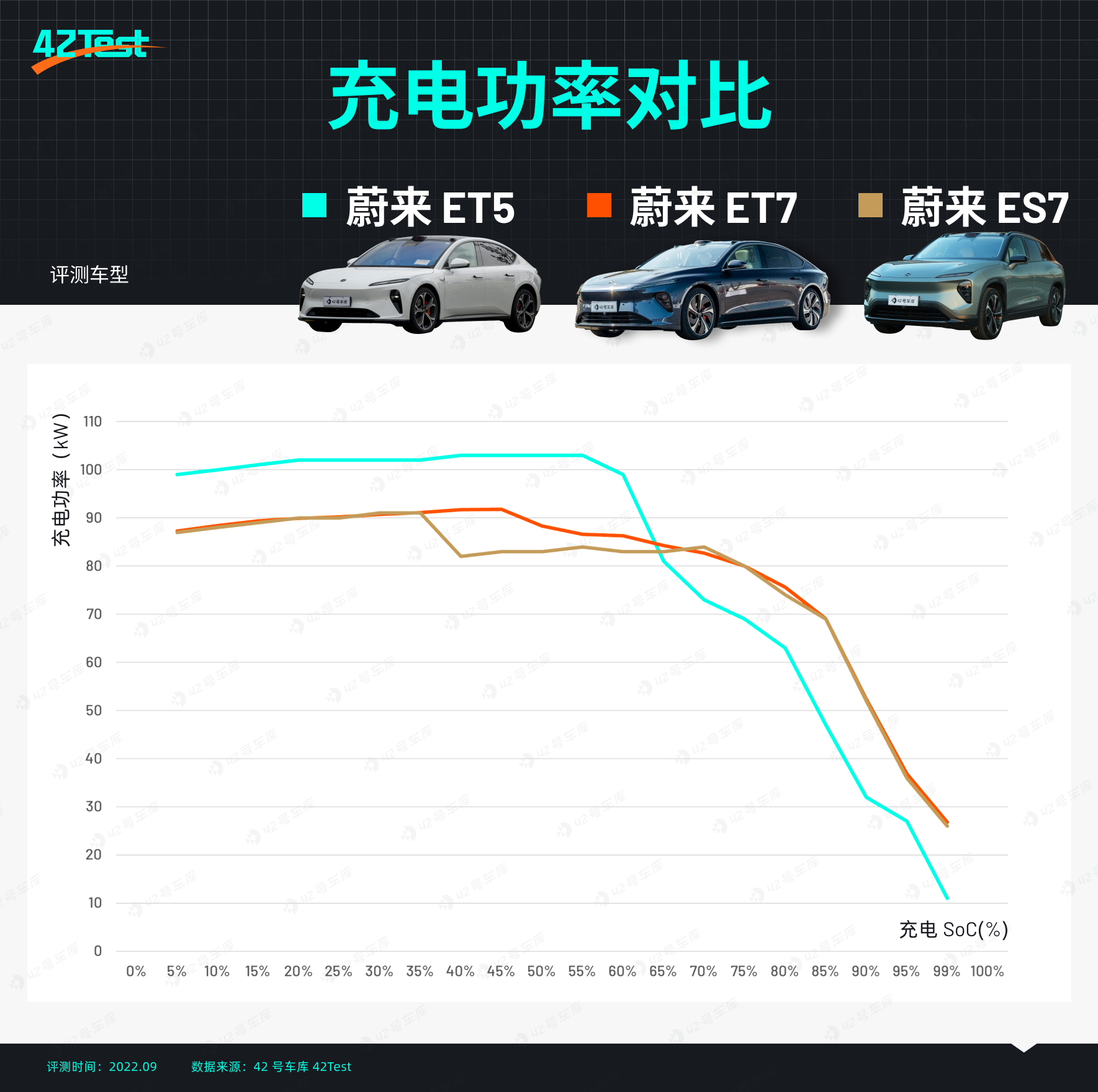
Furthermore, we also found that the current decay of the ES7 is earlier than that of the ET7. The ES7 cannot maintain the maximum current at 35% SOC and starts to reduce power. The ET7 still persists until 45% when the power drops. So, the reason why the ET7 is one minute faster than the ES7 is due to this.
In addition, we also compared the 75 kWh ternary lithium battery. Using the same 180 kW DC charging pile, the maximum power of the 75 kWh battery can break a hundred, and the peak power is unexpectedly higher than that of the 100 kWh battery.
At the same time, the 75 kWh ternary lithium battery has a more durable peak power, which starts to decrease only after 60%. But the decrease in the second half is very large, and the advantage in power compared to the 100 kWh is not obvious.
Overall, the performance of the 100 kWh battery on the ET7 in terms of charging power is mediocre, and the speed of 63 minutes to charge from 5% to 95% can hardly be considered astonishing. For NIO, the most efficient way to replenish energy is to go to the battery swapping station and spend 5 minutes swapping for a fully-charged battery.
Currently, NIO relies heavily on battery swapping to gain a significant advantage on energy replenishment, and the third-generation battery swapping station is also about to be launched. However, NIO is not betting everything on battery swapping, as 500 kW ultra-fast charging and 800 V high-voltage platform are also in the pipeline.
With a three-pronged strategy, NIO is determined to ensure that users can comfortably drive electric cars. And we are also determined to see what progress NIO will make in charging efficiency in the future.
Advanced Driver Assistance: Wait for NOP +
NIO has spared no effort in advanced driver assistance hardware on the ET7, equipping the vehicle with a total of 33 perception hardware, including:
- 1 Ibeo Faicon LiDAR;
- 7 ADAS cameras with 8 million pixels;
- 4 surround-view cameras with 3 million pixels;
- 1 DMS camera;
- 5 millimeter-wave radars;
- 12 ultrasonic sensors;
- 2 high-precision positioning units and V2X vehicle-road coordination;
- 4 Orin chips (total computing power of 1,016 TOPS).
Compared to the NT 1.0 platform products, all series of products in NT 2.0 are equipped with a LiDAR (Ibeo Faicon) and four Orin chips as standard. According to the official introduction, this 1,550 nm Ibeo Faicon LiDAR has an angular resolution of 0.06° × 0.06° in the ROI area, providing stronger perception of vehicles and pedestrians ahead.
 The laser radar with an angular resolution of 0.06° × 0.06° can detect a laser point at every 0.2 meters (200 × tan 0.06 ≈ 0.21 meters) on obstacles at a distance of 200 meters, providing good recognition for pedestrians or crossing non-motorized vehicles. However, for a 0.2° × 0.2° laser radar at the same distance of 200 meters, the spacing between laser points increases to 0.7 meters, which weakens the perception ability of small objects.
The laser radar with an angular resolution of 0.06° × 0.06° can detect a laser point at every 0.2 meters (200 × tan 0.06 ≈ 0.21 meters) on obstacles at a distance of 200 meters, providing good recognition for pedestrians or crossing non-motorized vehicles. However, for a 0.2° × 0.2° laser radar at the same distance of 200 meters, the spacing between laser points increases to 0.7 meters, which weakens the perception ability of small objects.
In terms of assisted driving features, NIO ET7 can only provide basic lane keeping and turn signal functions currently. In terms of longitudinal control, NIO ET7’s acceleration and deceleration actions are very gentle, and even in the case of following another vehicle at a close distance, the motion is still very linear. In terms of lateral control, NIO ET7’s lane keeping performance is average and it can easily pass high-speed curves. However, on sharp curves, the performance may not be smooth enough.
When faced with larger curves, NIO ET7’s way of steering may be slightly awkward, and there will be a significant decrease in speed in the 40 km/h speed limit. There is still room for improvement in this regard. More information about NIO ET7’s basic assisted driving performance can be found in this article – “ET7 Basic Assisted Driving Test Report”.
Fortunately, NOP+ based on the NT 2.0 platform will be launched soon, which will partially make up for the shortcomings of lateral control based on high-precision maps.
This article is a translation by ChatGPT of a Chinese report from 42HOW. If you have any questions about it, please email bd@42how.com.
